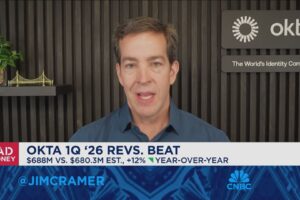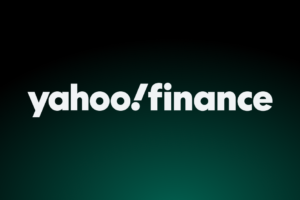
In 1864, Ulysses S. Grant became commander of all Union forces. Choosing to lead while attaching himself to the Army of the Potomac, several senior officers started warning him about how gifted Robert E. Lee – commander of the opposing Confederate Army of Northern Virginia – was and how he could do things no other general could conceive. After hearing these claims just a little too much, Grant finally burst out saying, “Let’s stop worrying about what Lee does, and worry about what we are going to do to beat him.” In the end, of course, Grant forced Lee to the point he lost the ability to maintain the initiative and ended the war a year later at Appomattox Court House.
<p class="canvas-atom canvas-text Mb(1.0em) Mb(0)–sm Mt(0.8em)–sm" type="text" content="I bring up this story because I think many investors sometimes get the wrong end of the intellectual stick when it comes to the concept of moats. The idea of a competitive moat comes from Warren Buffett (Trades, Portfolio) and has – like the concept of Mr. Market – been invaluable to investors to understanding core concepts in value investing. The idea is simple: much like a medieval castle that dug a moat to protect against attack, so a company will build a moat to protect its products and services from competition. I recently discussed that sometimes the best measures of diagnosing a moat are outside of the standard measures of return on capital, return on equity, gross/net margins, etc. In that same discussion, I explained how utilizing data from a holding’s customers and other such data not found in more traditional research can make a huge difference in finding compounding machines. I used Veeva (NYSE:VEEV) and Adobe (NASDAQ:ADBE) as working examples.” data-reactid=”19″>I bring up this story because I think many investors sometimes get the wrong end of the intellectual stick when it comes to the concept of moats. The idea of a competitive moat comes from Warren Buffett (Trades, Portfolio) and has – like the concept of Mr. Market – been invaluable to investors to understanding core concepts in value investing. The idea is simple: much like a medieval castle that dug a moat to protect against attack, so a company will build a moat to protect its products and services from competition. I recently discussed that sometimes the best measures of diagnosing a moat are outside of the standard measures of return on capital, return on equity, gross/net margins, etc. In that same discussion, I explained how utilizing data from a holding’s customers and other such data not found in more traditional research can make a huge difference in finding compounding machines. I used Veeva (NYSE:VEEV) and Adobe (NASDAQ:ADBE) as working examples.
In this discussion, I thought I’d invert the concept of moats and take a look at it from a more distinct – and often overlooked – view that can greatly impact one’s valuation and decision to include in the portfolio.
<p class="canvas-atom canvas-text Mb(1.0em) Mb(0)–sm Mt(0.8em)–sm" type="text" content="Rethinking the moat concept” data-reactid=”21″>Rethinking the moat concept
Many people think of moats from this competitive perspective. With an eye toward competition, the company will try to utilize internal development, R&D, acquisitions (large and small) and constant quality improvements to stay ahead of their competition. At Nintai Investments, we think about moats somewhat differently. We think moats can be perceived as keeping competitors at bay as well as keeping customers even closer. Rather than just keeping competitors out, we like to think that a good moat will also keep customers in, with a portfolio holding continually broadening the moat to keep the customer purchasing ever greater products and services. By inverting the standard moat approach, I think an investor can identify some of the strongest companies in the market. Not only can you evaluate how growth might slow, you also identify where growth will come over the next decade or two.
<p class="canvas-atom canvas-text Mb(1.0em) Mb(0)–sm Mt(0.8em)–sm" type="text" content="Components for keeping the customer” data-reactid=”23″>Components for keeping the customer
As you invert the moat model, it’s important to realize you are now looking at the relationship between your portfolio holding and their customers, not their competitors. Looking outwards, one views the moat and ascertains the risks associated with other companies that might assault it with new products, price reductions, increased quality, patent challenges, etc. These all have the ability to impede future growth. Looking inward, we are more interested in seeing how your portfolio company has created ties with its customers that make it both difficult to move to a competitor and increase revenue through increased sales. The former (moat as competitive deterrent) is about reacting defensively to outside forces. The latter (moat as binding portfolio holding with its customers) is about reacting offensively and creating new opportunities for growth and profits.
It’s critically important that investors see this distinction and be able to evaluate the moat from both perspectives. One requires significant knowledge of competitors, market trends and technology innovation. The other requires extremely deep understanding of customer strategy and operations, organizational structure, vendor contracting practices, etc. The ability to see both views will give you more knowledge about your portfolio holding than most analysts have on Wall Street. I should point out the ability to achieve success with so much research requires individual investors (and small investment shops) to run a relatively focused portfolio.
To get a better understanding of this dual approach, I thought I’d use one of the same companies discussed in my last article (and Nintai Investment portfolio holding), Veeva (NYSE:VEEV). Veeva operates two major businesses. The first – Veeva Commercial Cloud – is a vertically integrated customer relationship management service. Cloud is designed to create real-time collaboration between different components of a life science company’s sales, marketing and promotion components of a product team. It also has a regulatory component, which is critical to making sure the customer doesn’t run afoul of anti-kickback laws and statutes. The company currently has 80% market share (and growing) with extraordinarily high retention rates. The second offering – Veeva Vault – grew out of Life Science’s needs for assistance outside of their CRM efforts. Vault provides products for the remaining business units in Life Sciences – regulatory and compliance, manufacturing quality (CGMP or current good manufacturing practices regulations), safety (OSHA requirements) and R&D (clinical discovery and development).
<p class="canvas-atom canvas-text Mb(1.0em) Mb(0)–sm Mt(0.8em)–sm" type="text" content="The moat as a defensive weapon” data-reactid=”32″>The moat as a defensive weapon
As Veeva looks outwards, they want their moat to protect against individual competitor’s products and services, technological innovation and market innovations. As Veeva’s platform is built on Salesforce (NYSE:CRM) technology and the Veeva team is former CRM team members, Salesforce is not seen as a direct competitor at this time (it may be later, but not for now). Currently, Veeva’s major competitors are companies such as Open Text (NASDAQ:OTEX), IQVIA (NYSE:IQV), Oracle (NYSE:ORCL), Kapture and PharmaCODE (Softdent). There isn’t a company (perhaps other than Oracle) that competes against Veeva in all of its offerings.
Veeva spends $227 million on research and development, or roughly 21% of total revenue. This is a substantial percentage compared to its competitors and demonstrates the intensity in which it confronts competitors. This spending has dug a significant moat around both its offerings in biopharma and has allowed for a head start in several industries with similar characteristics. These include cosmetics, food manufacturers and other regulated production and marketing processes.
As a defensive tool, Veeva’s moat works in several ways in keeping its competitors at bay. These include technological advances, new (and trademarked) products and services and increased functionality.
<p class="canvas-atom canvas-text Mb(1.0em) Mb(0)–sm Mt(0.8em)–sm" type="text" content="Technological advances” data-reactid=”36″>Technological advances
Veeva continues to utilize technology as a differentiator in its battle with competitors. Examples of this include Veeva CRM Approved Notes (May 2019) and Veeva CRM’s Autosync (August 2019). Veeva CRM Approved Notes is designed to make it easier for sales representatives to utilize free text (not like drop-down boxes where the user is limited to preset answers). Veeva Approved Messaging will add support for messaging applications such as WeChat and WhatsApp to open up new digital channels for compliant engagement. Ultimately, this will allow users to apply artificial intelligence. Veeva Autosync makes it possible for all information – regardless of device – to be consistent. Activity, customer and product data will automatically synchronize and always be available from any Apple and Windows phone, tablet and laptop. This is a huge step in meeting intra-company interoperability.
<p class="canvas-atom canvas-text Mb(1.0em) Mb(0)–sm Mt(0.8em)–sm" type="text" content="New and trademarked products” data-reactid=”38″>New and trademarked products
<p class="canvas-atom canvas-text Mb(1.0em) Mb(0)–sm Mt(0.8em)–sm" type="text" content="A key competitive advantage is the ability to protect your product with a patent or trademark. Patents are the number one source of moats for biopharmaceuticals, allowing exclusivity for 12 to 20 years for each new product. Veeva currently has 25 approved patents. Each of these makes up a facet of its competitive moat. These patents range from "System and method for creating a new account in CRM" (patent #: 10467629 Nov. 9, 2015) to "System and method for controlling electronic communications", (patent #: 10169480 Jan. 1, 2019). These patents protect major components of Veeva’s products.” data-reactid=”39″>A key competitive advantage is the ability to protect your product with a patent or trademark. Patents are the number one source of moats for biopharmaceuticals, allowing exclusivity for 12 to 20 years for each new product. Veeva currently has 25 approved patents. Each of these makes up a facet of its competitive moat. These patents range from “System and method for creating a new account in CRM” (patent #: 10467629 Nov. 9, 2015) to “System and method for controlling electronic communications“, (patent #: 10169480 Jan. 1, 2019). These patents protect major components of Veeva’s products.
<p class="canvas-atom canvas-text Mb(1.0em) Mb(0)–sm Mt(0.8em)–sm" type="text" content="Increased functionality” data-reactid=”40″>Increased functionality
To stay ahead of competitors, it is critical for a company to continually add functionality to its existing systems as it builds out entirely new offerings. In Veeva’s case, an example of this is their rolling out of several new functionalities to its CRM product. At its Barcelona Users Summit in 2019, the company rolled out new functionality that allows its customers greater flexibility for improved collaboration and productivity. This increased functionality increased Veeva’s lead in the biopharma space and widened its competitive moat against new competitive efforts.
All three of these are designed to separate Veeva from its competitors and create a wide competitive moat. A quick look at the numbers show the efforts are paying off. Patient churn (those not reupping current services) is less than 1.2%. Return on invested capital of 65% far exceeds its weighted average cost of capital of 5.6%. Free cash margins are roughly 40%. All of these numbers reflect a company with a strong competitive advantage.
<p class="canvas-atom canvas-text Mb(1.0em) Mb(0)–sm Mt(0.8em)–sm" type="text" content="The moat as an offensive weapon” data-reactid=”43″>The moat as an offensive weapon
But this rally only tells half the story. A deep moat also makes it hard for a customer to jump ship and join a competitor. The moat should be as powerful holding customers in as it is keeping customers out. It’s easy to forget this. Sometimes companies are so focused on competition, they fail to satisfy their customers. Inverted, it can be equally true – companies so focused on their customers can some time lose sight of where their competitors are headed. If I had my druthers, I would certainly pick the former over the latter.
When analyzing a moat as a tool for looking inward, there are three factors you should look for – deep subject matter/customer knowledge, customized applications and the ability to bring whatever resources are necessary to the table.
<p class="canvas-atom canvas-text Mb(1.0em) Mb(0)–sm Mt(0.8em)–sm" type="text" content="Deep subject matter/customer knowledge” data-reactid=”46″>Deep subject matter/customer knowledge
Veeva has extraordinary depth of knowledge in the life sciences and pharmaceutical industries. For over 13 years, the company has worked exclusively in the space. Its customers have been clients for a decade or more. They have deep ties with both C-suite and operational leaders and an intimate understanding of their needs. Having branched into nearly every part of the business, Veeva staff can create fully integrated products that seamlessly fit into their clients’ model. They can listen to some the more esoteric parts of the business and be able to find how that might integrate this into another business segment and increase both components’ value. In short, they are truly subject matter experts.
<p class="canvas-atom canvas-text Mb(1.0em) Mb(0)–sm Mt(0.8em)–sm" type="text" content="Customized applications” data-reactid=”48″>Customized applications
Such a deep understanding of each client’s needs means Veeva can create products to meet industry needs or customize these to individual company needs. For instance, a company with a deep focus on research and development in oncology immunotherapy will have very different product needs than a large biopharma with several large blockbuster drugs and a strategy to build growth with smaller snap-on acquisitions. The demand to focus on large CRM systems will be much less in the former than the latter. Conversely, the latter will need an extremely robust CRM component to track sales, marketing, and promotion for its large product teams in the field.
<p class="canvas-atom canvas-text Mb(1.0em) Mb(0)–sm Mt(0.8em)–sm" type="text" content="Ability to bring resources to the table” data-reactid=”50″>Ability to bring resources to the table
Finding a vendor that can be flexible and nimble in its thought processes and also have the resources to fund multiple options can be very difficult. That vendor must reside – in Stephen Hawking’s phrase – where the environment must be “just right.” This Goldilocks company must be nimble enough to keep up with industry innovations, individual customization and complex technology problem solving. The company must have enough cash flow to pay for ongoing customer-driven R&D, while utilizing additional dollars to identify and create products for new industries. This takes a company with a rock solid balance sheet and high free cash flow margins.
<p class="canvas-atom canvas-text Mb(1.0em) Mb(0)–sm Mt(0.8em)–sm" type="text" content="Conclusions” data-reactid=”52″>Conclusions
Finding a company where the moat is just as effective at keeping competitors out as keeping customers in is a difficult proposition. It requires a tremendous amount of legwork as only some of the data is publicly available. As a biopharma company, finding a vendor that meets the criteria outlined as equally hard for an investor. I’ve written before that the research criteria I use on GuruFocus gets me a list of roughly 150 companies that might be a company like the ones I’ve described. I say “might” because meeting search criteria can answer general questions about margins, free cash flow or cash on the balance sheet. It doesn’t tell us how good their relationships are with management, or how innovative they are, or the flexibility in their thinking to meet individual company needs. These latter characteristics are essential to finding the 10 baggers that all investors seek and why they are so hard to find.
As always, I look forward to your thoughts and comments.
Disclosure: Nintai Investments LLC owns shares of Veeva and Adobe in client accounts.
Read more here:
<p class="canvas-atom canvas-text Mb(1.0em) Mb(0)–sm Mt(0.8em)–sm" type="text" content="Not a Premium Member of GuruFocus? Sign up for a free 7-day trial here.” data-reactid=”62″>Not a Premium Member of GuruFocus? Sign up for a free 7-day trial here.
<p class="canvas-atom canvas-text Mb(1.0em) Mb(0)–sm Mt(0.8em)–sm" type="text" content="This article first appeared on GuruFocus.
” data-reactid=”63″>This article first appeared on GuruFocus.










